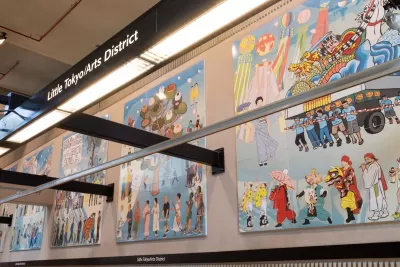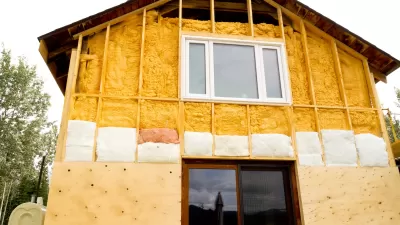TransitCenter recommends several transit capital projects deserving of federal transportation dollars.

A TransitCenter blog post highlights several major transit projects that could receive a boost with federal funding from the Justice40 initiative and the Infrastructure Investment and Jobs Act (IIJA). “Our network of transit advocates, organizers, and riders are calling on their local transit agencies and state DOTs to advance projects designed to improve the mobility of Black and Brown riders whose opportunities have been compromised by decades of transportation planning designed to primarily benefit more affluent white communities.”
The recommended projects include the Los Angeles Regional Connector, which opened this June. “Unfortunately, the three Regional Connector stations in downtown Los Angeles project opened without the approved plans for improving walking and biking connections in place. The essential first/last mile component of the project would dramatically impact the safety of passengers who use the system, and this downgrade signaled that cars are still the priority in Los Angeles.”
Another is the proposed East/West Bank Bus Rapid Transit (BRT) project in New Orleans, which would give the city its first BRT line and would connect residents to more economic opportunities, jobs, and amenities.
The blog post notes, “Each of these projects shares a common thread—making urban transportation work better for current riders and Black and brown communities. However, their success hinges on the allocation of IIJA funds and the collective commitment of local and federal stakeholders.”
FULL STORY: To Achieve Justice and Climate Outcomes, Fund These Transit Capital Projects

Trump Administration Could Effectively End Housing Voucher Program
Federal officials are eyeing major cuts to the Section 8 program that helps millions of low-income households pay rent.

Planetizen Federal Action Tracker
A weekly monitor of how Trump’s orders and actions are impacting planners and planning in America.

Ken Jennings Launches Transit Web Series
The Jeopardy champ wants you to ride public transit.

Opinion: Transit Agencies Must View Service Cuts as Last Resort
Reducing service could cripple transit systems by pushing more riders to consider car ownership, making future recovery even less certain.

‘Smart Surfaces’ Policy Guide Offers Advice for Building and Maintaining Urban Tree Canopies
Healthy, robust tree canopies can reduce the impacts of extreme heat and improve air quality.

New Jersey Lawsuit Targets Rent-Setting Algorithms
The state of New Jersey is taking legal action against landlords and companies that engage in what the state’s Attorney General alleges is illegal rent fixing.
Urban Design for Planners 1: Software Tools
This six-course series explores essential urban design concepts using open source software and equips planners with the tools they need to participate fully in the urban design process.
Planning for Universal Design
Learn the tools for implementing Universal Design in planning regulations.
Heyer Gruel & Associates PA
Ada County Highway District
Institute for Housing and Urban Development Studies (IHS)
City of Grandview
Harvard GSD Executive Education
Toledo-Lucas County Plan Commissions
Salt Lake City
NYU Wagner Graduate School of Public Service





























